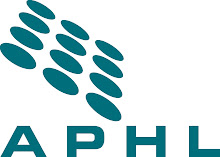FESAP was created by the recently signed Executive Order on Optimizing the Security of Biological Select Agents and Toxins in the United States to provide advice to the Secretaries of the United States Department of Health and Human Services (HHS) and the United States Department of Agriculture (USDA) on Select Agent Program security including:
- The composition and potential reduction of the Biological Select Agents and Toxins (BSAT) list, including the development of “Tier 1 agents,” which pose the greatest risk for intentional misuse
- Measures to enhance reliability of personnel with access to Tier 1 BSAT
- Standards for physical and cyber security for facilities possessing Tier 1 BSAT
- Emerging policy issues relevant to the security of BSAT.
Pentella echoed the sentiments expressed in the comments provided by APHL on the current HHS list of select agents and toxins. He commented that existing biosecurity measures have proven successful and that increased biosecurity measures would be burdensome and costly to public health laboratories, impacting their ability to provide immediate testing and response capabilities to potential bioterrorism and other threats of public health significance. Pentella further emphasized the funding issues facing laboratories, particularly in light of economic constraints leading to furloughs and extensive budget cuts.
In response to the many questions raised by the panel, Pentella and Humes noted that current personnel controls are adequate and are further strengthened by regulatory requirements that specify stringent biosafety and biosecurity controls within public health laboratories. Laboratory directors and responsible officials remain empowered to make decisions necessary to maintain the integrity of their laboratories.
In a heartening conclusion to the discussion, Dr. Gerald Parker, DVM, PhD, MS, Principal Deputy Assistant Secretary, Office of the Assistant Secretary for Preparedness and Response, HHS stated that, "The LRN is one of best investments we've collectively made in bioterrorism preparedness and response."
APHL and its members value opportunities to shed light on issues that affect public health laboratories and will continue to promote the role of these laboratories in detecting and responding to bioterrorism, emerging infectious diseases and other public health threats.





No comments:
Post a Comment